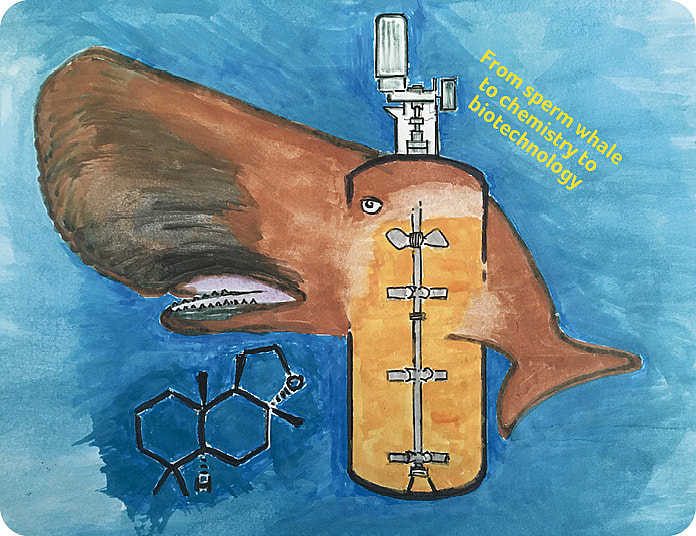- Get directions
- Leave a review
- Claim listing
- Bookmark
- Share
- Report
- prev
- next
- Monday, May 5, 2025 @ 11:00 am
Switzerland is a champion of innovation and one of the world’s most advanced free-market economies, with a strong foundation in biotechnology and its application in the pharmaceutical sector. Switzerland’s privileged position brings with it an obligation - to develop sustainable technological solutions for a less privileged global society. This can only be achieved through international alliances and cooperation.

Benoît Dubuis
SATW | President

Hans-Peter Meyer
SATW | Scientific Advisory Board
In 2024, the chemical, pharmaceutical and life sciences industries contributed 52% to Switzerland’s total foreign export trade of CHF 283 billion. With an export value of CHF 52 billion in 2024, biotech products from the immunologicals subsegment have become an important pillar of Swiss exports (see Export Statistics article, Page 14).
The combination of global industrial players such as Lonza, Novartis, Roche, Givaudan, or DSM-Firmenich, along with a thriving startup scene and a strong academic community with global powerhouses ETH Zurich and EPFL, makes the biotechnology and life sciences sector a cornerstone of the Swiss economy.
However, Switzerland’s leading role in biotechnology also brings with it an obligation - to serve and develop sustainable (technological) solutions for the benefit of all. International alliances and cooperation are prerequisites for maintaining this privileged position.
Scientific methodology and evidence-based approach
The power of science to serve the public good lies in its objectivity and its ability to adapt and evolve based on facts, empirical data, and rigorous experimentation. As we continue to innovate and collaborate across borders, it is imperative that we maintain a steadfast focus on scientific integrity, ensuring that decisions and advancements are grounded in evidence and not influenced by external pressures or belief systems.
International collaborations have yielded superior results and we all benefit from an open dialog, sharing information and learning from experiments and diverse research approaches from all over the globe. This commitment is essential not only to preserve the credibility of scientific research but to ensure that our collective efforts are directed towards tangible and meaningful solutions to global challenges.
Exchange of best practices
International collaborations are the most effective way to promote the exchange of ideas and best practices. In a collaborative context, “what is essential is not to know, but to know who knows!” With rapid technological advances, assessing and predicting future trends has become a major challenge.1
Every country faces its own unique innovation challenges and successes, and a technology that works in one country may face specific challenges when applied in another. Through international collaboration, it is possible to identify these challenges early on and adjust evaluation strategies accordingly. SATW is aligned with this dynamic, relying on EuroCase and CAETS in addition to numerous bilateral collaborations, including deepening sovereignty themes with ACATEC (Germany) and healthy aging with CAE (China).
Anticipating global trends
In an increasingly interconnected world, technologies do not develop in isolation. Trends emerging in one country can quickly influence other regions. The need to switch to sustainable raw materials and corresponding value chains for example, are cross-border shifts. By working with foreign partners, we have the opportunity to stay informed about these dynamics and assess their potential impact at a local level.
International partnerships enable proactive monitoring of technology, identifying innovations likely to influence entire sectors before they become standards. With access to research and case studies from various countries, we can better understand the forces shaping the technological future.
Defossilization and sustainability
The Swiss electorate approved the Climate and Innovation Act in summer 2023, aiming for climate neutrality by 2050. Defossilization represents a mammoth task and economic challenge, best overcome through cooperation in larger networks. At the same time, it presents opportunities for innovative companies developing alternatives to fossil resources and unsustainable manufacturing methods.
In the energy sector, solutions exist to replace fossil fuels, such as switching to renewable energy and electrification. However, for the chemical industry, it is still unclear how fossil raw materials can be replaced. For this reason, SATW is striving to gain an overview of the effects of defossilization on the chemical industry’s value chains and identify potential actions for relevant players.
Following an initial conference in October 2024, SATW plans a second forum in early 2025 in which industry representatives, associations, administrations, and researchers can exchange experiences and form an overall picture of key areas of future research.²
Opportunities
Industrial or white biotechnology, driven by sustainability, is the next potential economic sector, with biotechnological options currently underutilized. New value chains and microbial production methods are emerging, based on rational metabolic and cellular engineering, culminating in synthetic microbial life.
However, two requirements must be met to realize this potential:
1. The synergies and expertise of successful red biotechnology must be leveraged.
2. There must be cooperation and alliances throughout the value chain.
Cellular agriculture and cell-based meat, fish, or dairy products are opportunities at the intersection of red and white biotechnology.
Blockchain as a facilitator
With the world facing simultaneous challenges from climate change, the need to defossilize and dwindling resources, we must become creative and innovative beyond the laboratory.
We must also rethink how we collaborate. The traditional business model requires innovation, methods, process data, and product data to remain confidential unless patented. However, this model presents a significant disadvantage. It is safe to assume that companies, especially large global enterprises, hold considerable “idle know-how” - knowledge developed for a specific product, process, or method, but never commercialized due to strategic changes, market failure, or interrupted R&D.
Blockchain, an easily scalable Decentralized Autonomous Organization (DAO), can facilitate secure peer-to-peer knowledge transfer, where transactions are encrypted and maintained on a blockchain³ (“what is essential is not to know, but to know who knows!”). Blockchain allows automation and execution of these steps, such as in data-sharing.
Knowledge and know-how represent a company’s intellectual capital but, like financial capital, it must be invested, not merely stored. Like money, intellectual property is ideally distributed and shared by many parties. SATW members continue to explore the development and implementation of blockchain tools.
In conclusion
As many countries are turning to nationalist policies, international collaborations serve as bridges that, beyond knowledge, are powerful vectors of cooperation, strengthening the resilience and adaptability of our organizations. In an uncertain world, the ability to adapt quickly to change is a precious asset. By diversifying knowledge sources and establishing cooperative networks, we learn to navigate complex environments more effectively and benefit from the trust these collaborations build - a trust that could be crucial in the event of another major crisis.
References
1 https://technology-outlook.satw.ch/en/
3 How blockchain can help to ensure the continued success of the Swiss industrial biotech sectors. Swiss Biotech Report 2022 p28-29
